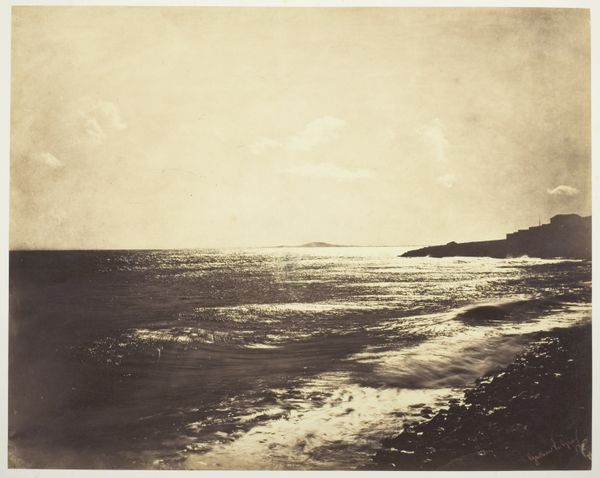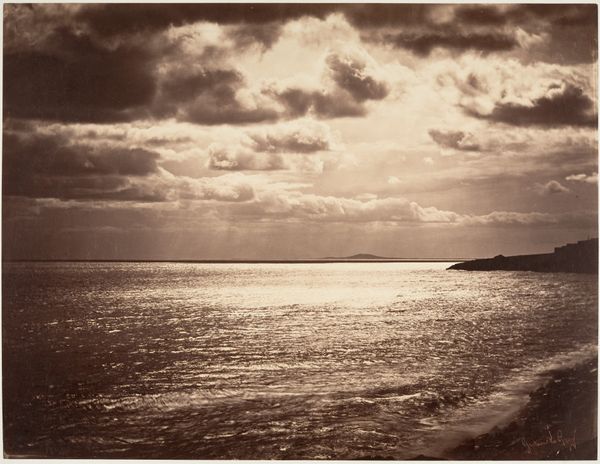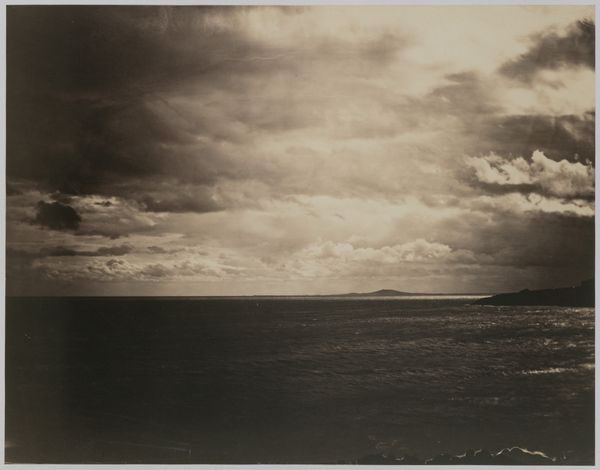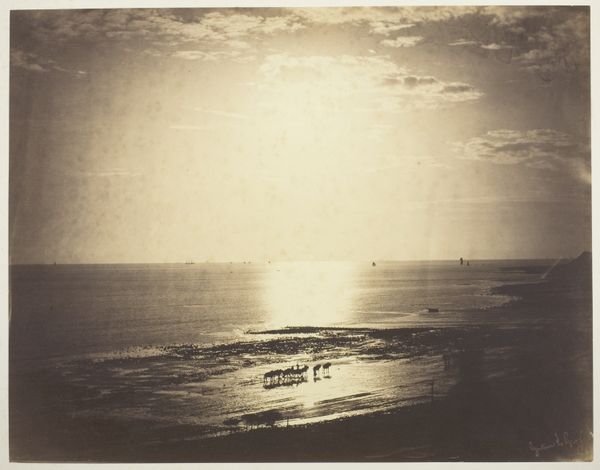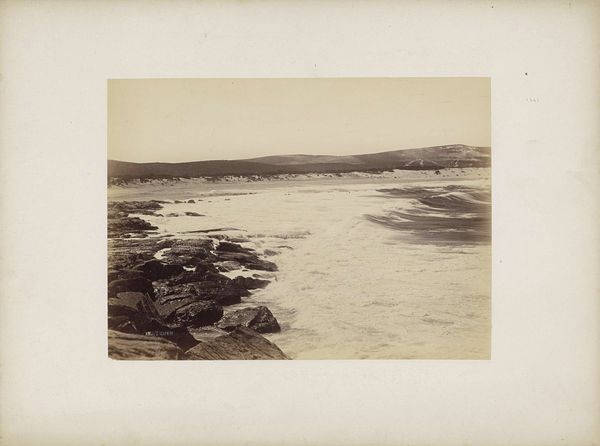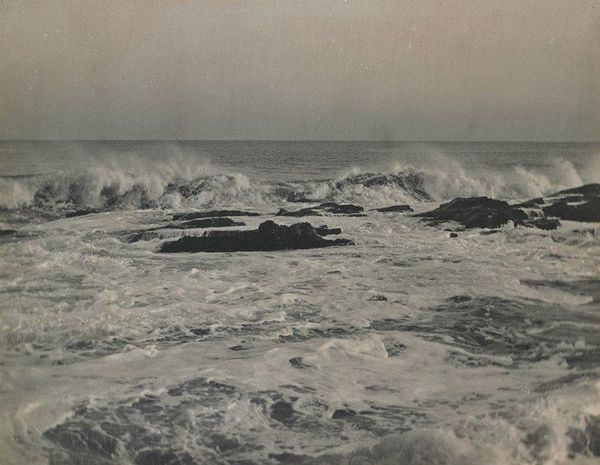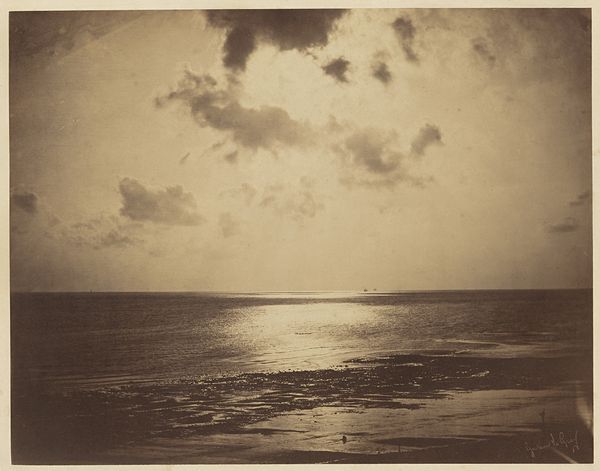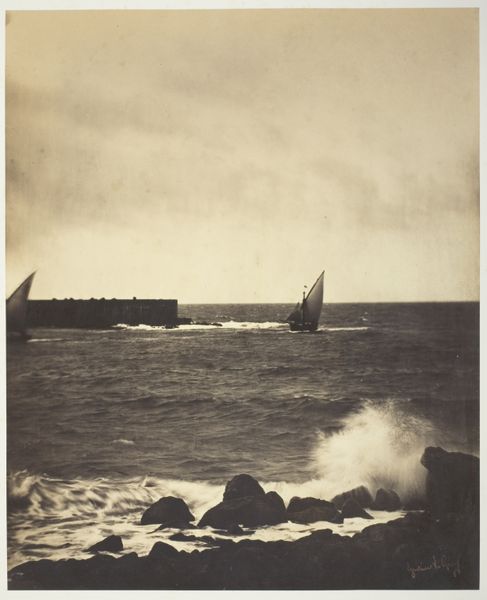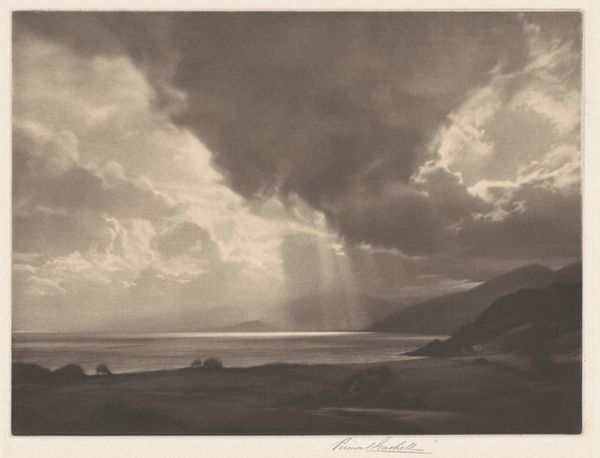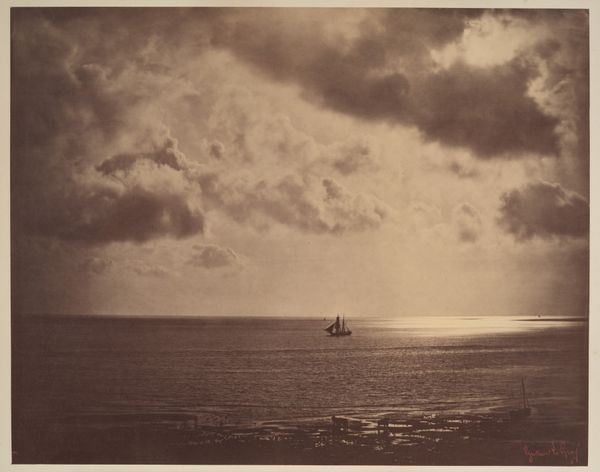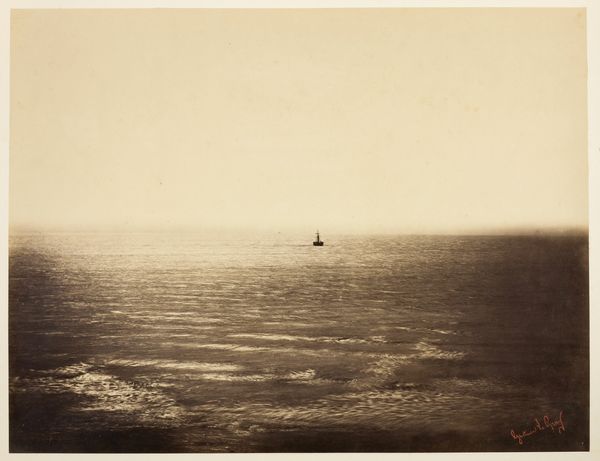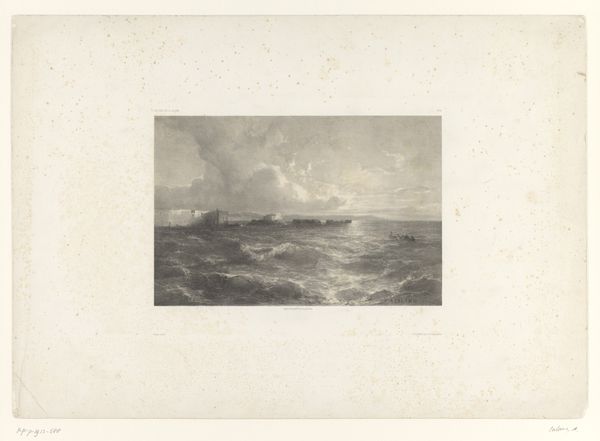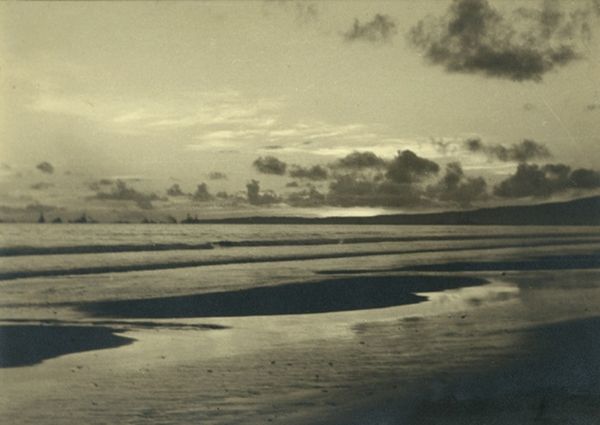![[The Great Wave, Sète] by Gustave Le Gray](/_next/image?url=https%3A%2F%2Fd2w8kbdekdi1gv.cloudfront.net%2FeyJidWNrZXQiOiAiYXJ0ZXJhLWltYWdlcy1idWNrZXQiLCAia2V5IjogImFydHdvcmtzLzUxMzhlZDc5LWQ1OGItNGUzNi05MTY0LTE1NTNhNWZjN2RiNC81MTM4ZWQ3OS1kNThiLTRlMzYtOTE2NC0xNTUzYTVmYzdkYjRfZnVsbC5qcGciLCAiZWRpdHMiOiB7InJlc2l6ZSI6IHsid2lkdGgiOiAxOTIwLCAiaGVpZ2h0IjogMTkyMCwgImZpdCI6ICJpbnNpZGUifX19&w=3840&q=75)
Dimensions: 33.7 x 41.4 cm (13 1/4 x 16 5/16 in.)
Copyright: Public Domain
Editor: We're looking at Gustave Le Gray's "The Great Wave, Sète," taken in 1857. It's a gelatin-silver print, and the contrast between the turbulent sea and that distant, imposing structure is just captivating. How do you interpret this work, focusing on its formal qualities? Curator: Intriguing choice of words. The work hinges on the stark juxtaposition of natural and constructed forms. Observe how the dynamism of the waves—the textured interplay of light and shadow, achieved through the photographic process—contrasts with the stoic horizontality of the breakwater. Is this a conversation of Romanticism with early Realism? Editor: Definitely. The wave's texture versus the stark line of the man-made breakwater – it's hard to ignore the tension. Curator: Precisely. Furthermore, let us consider the composition. The strategic placement of the horizon line and the way the clouds mirror the wave's form – all contributes to a sense of visual harmony amidst the portrayed chaos. Are we seeing nature controlled, or a structure being consumed by nature? What say you? Editor: That's a great question. The muted tones also contribute. Do you think the restricted palette draws our eye to particular shapes? Curator: Undeniably. The limited tonal range invites us to scrutinize the gradations of light, drawing our attention to the texture and form, the very architecture of the scene. Form dictates content. Editor: Fascinating. I never considered how the choice of silver gelatin print can alter perception so dramatically, thanks for elucidating Le Gray’s composition choices! Curator: Indeed, analyzing formal elements provides tangible keys for unlocking artistic intention and visual narratives, enabling a greater connection with the art.
Comments
No comments
Be the first to comment and join the conversation on the ultimate creative platform.
